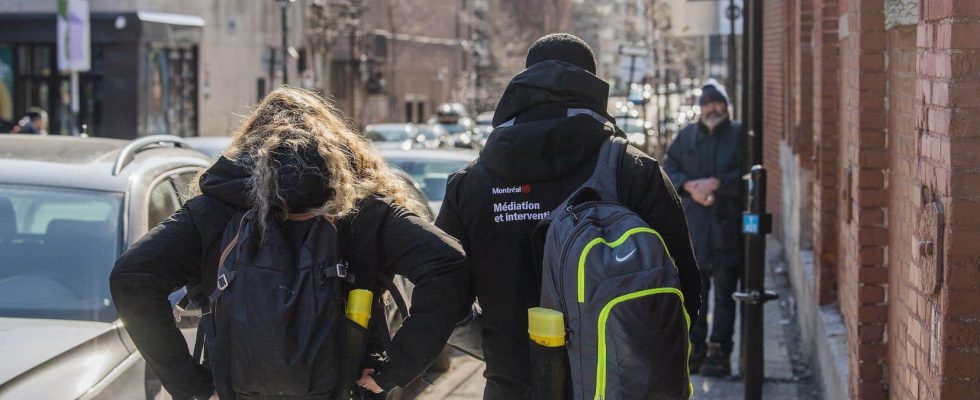This text is part of the special Social Work section
Pandemic, housing crisis, deinstitutionalization, inflation: the increase in vulnerability is multifactorial and cities are at the forefront of seeing the multiplication of needs. Initiatives are being organized to better respond to this.
“We do not want to transform our staff into social workers, but we want to raise awareness, inform them and help them face the new challenges that are increasing in all public spaces. The vulnerability is more and more obvious,” confides Jean-François Fortin, division head of the Drummondville library. His project, like several others, puts in place a more adapted and human approach to meet growing needs.
Intervene where people are
Opened in 2017, the new Drummondville library sits in the heart of downtown. The only public places without any expectations towards citizens and where loitering is even encouraged, public libraries play an important social role. “We think that social workers and public libraries know each other little and would benefit from doing so,” believes the man who is also vice-president of the Association of Public Libraries (the Association submitted a memorandum on the subject as part of of the future Estates General of Social Work).
In 2018, the Drummondville library noticed the increase in tensions and incidents, with the increase in attendance by vulnerable populations. If the first instinct was to adopt rules for user conduct, “we realized that that didn’t solve anything and that it excluded those who needed help,” says Mr. Fortin.
It was then that an innovative project was implemented, in collaboration with the CIUSSS and the community sector. With François Lacharité, director of the La Piaule organization, the library brought a community worker into its walls on a regular basis. The speaker creates a bond of trust with the most vulnerable citizens; it also raises awareness and supports library staff. This preventive approach allows people to be redirected to other resources and facilitates communication between everyone. Faced with the improvement in the climate and the feeling of security, the pilot project was renewed until 2025.
A mobile team on the ground
In Montreal, a pilot project was created to meet evolving needs. “At the municipal level, we are the first level. People turned to us and we felt that we needed to find an approach that came out of the box,” relates Josefina Blanco, elected in Rosemont–La Petite-Patrie and responsible, among other things, for social inclusion and homelessness to the executive committee of the City of Montreal. “And if people don’t have options, they’ll turn to 911,” she continues.
A complementary resource to the social safety net in place, the Mobile Mediation and Social Intervention Team (EMMIS) is available 24 hours a day, 7 days a week, and is deployed in four districts. Five will be added in the coming years. “EMMIS works with all stakeholders, both with people who have needs and with businesses,” explains M.me White.
The brigades’ mission is to defuse conflict or disturbing situations. “A hospital can call to take care of a situation; EMMIS receives calls related to homelessness or domestic violence,” gives M as an example.me White. Since its creation, EMMIS has carried out 28,000 interventions in public spaces. “It meets a need and it demonstrates that it is important to act upstream,” says the elected official.
Working cross-sectorally
The increase and diversification of needs therefore force us to work collaboratively. “This is something quite new for us, having a collective process. Before, the different actors were capable of acting on problems in isolation,” notes Audrey-Pier Lavoie, coordinator of the social development approach in Maria-Chapdelaine, in Lac-Saint-Jean. An intersectoral table was thus created in response to the scale and complexity of social issues. “Like the church square, it’s a place to build connections,” explains M.me The way.
The benefits are concrete, after just one year of existence. “On December 4, a shelter for people experiencing homelessness opened in particular thanks to the Table. Normally, it is the CIUSSS which would have led the project, but as the Table is already organized, we brought together the actors and reacted to the call from the field,” underlines Audrey-Pier Lavoie.
This rapid mobilization makes it possible to respond to emerging needs on the ground, with a macro vision. “Social workers are often busy putting out fires. They are essential, but it also requires larger structures and work in prevention,” concludes M.me The way.
This content was produced by the Special Publications team at Duty, relating to marketing. The writing of the Duty did not take part.
